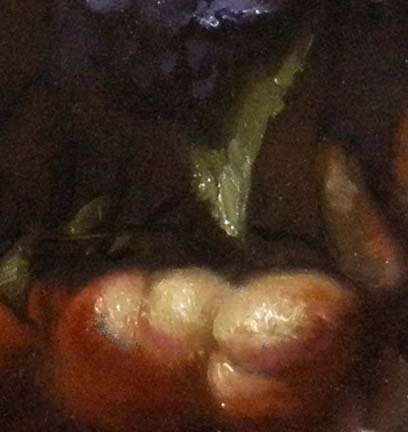Figs from the Pharaoh (detail)
Lessons from the Pharaoh’s Tomb
10×11 Oil on Linen
© 2009 Margret E. Short
The ancient Egyptians loved their gardens passionately. To return after death and rest in the shade and eat the fruit from the trees they had planted was a common prayer. Historians have found “offering lists” along with food in tombs.
In the tomb at Sakhara there was a meal laid out in totality. Each item was placed in a separate dish, dried, and remains today. These “offering lists” divided foods into categories; breads and cakes, meats, poultry, and lastly fruit and drinks.
Many kinds of breads and cakes are described and one in particular called, shat-cake, is very interesting. This cake was an unusual isosceles triangle shape and because of its height had to be laid on its side, creating heads and tails in a pile. In the 18th dynasty of Rekhmara an entire kitchen scene depicts shat-cakes being made, date flour being sifted, and others frying and stacking the cakes.
Fruits of many varieties were eaten and it’s possible we’ll never know about all of them. Dates, figs, grapes, raisins, and pomegranates were very popular. Peaches were introduced during the Ptolemaic (Greek) period. The harsh hot and arid climate was very limiting as to the varieties of crops that would survive and flourish. This is specifically the reason the fig trees thrived. They were large and did not have any special soil and water requirements.
In the detail from Figs from the Pharaoh above, along with the symbolic offering of figs, I have depicted small peaches. Adhering to the pigments from the ancients, I have used yellow ochre, red iron oxide, madder,black, and white.

